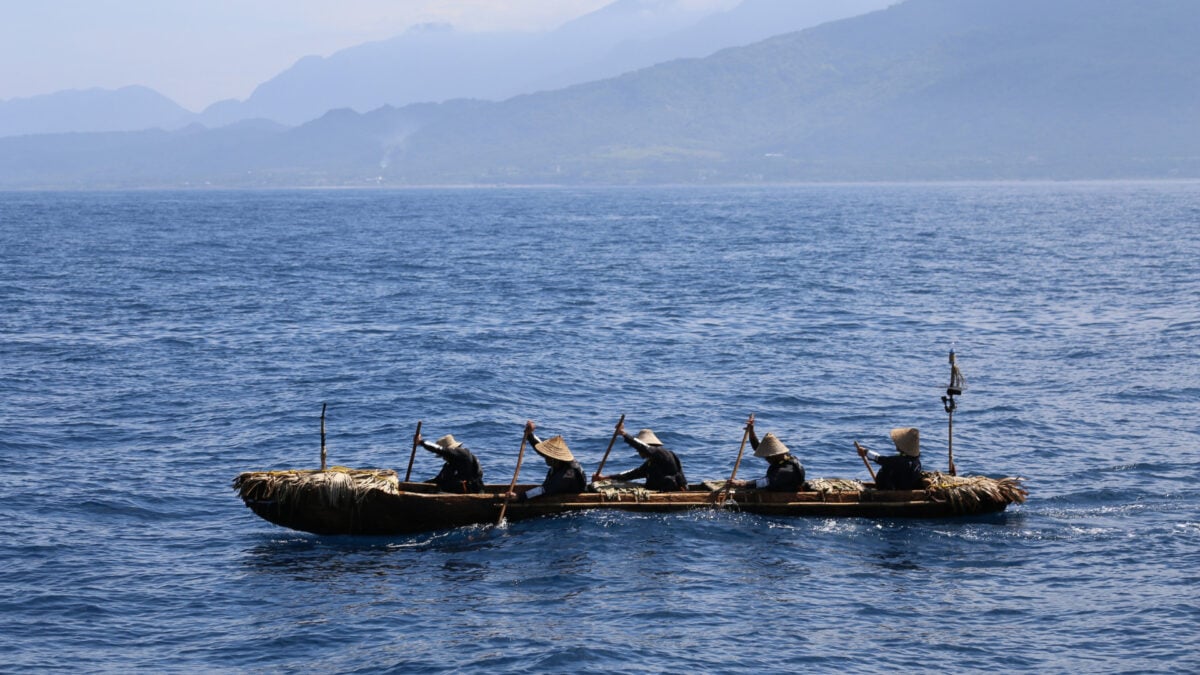YONAGUNI ISLAND, JAPAN – In a groundbreaking experiment, researchers have successfully recreated an ancient voyage to the Ryukyu Islands, shedding light on how early humans may have navigated one of the world’s most formidable ocean currents.
Breaking: Successful Reenactment of Paleolithic Voyage
Archaeologists have long speculated about how humans first reached the Ryukyu Islands, located off the southwestern coast of Japan, between 35,000 and 27,500 years ago. The mystery centers on their ability to cross the powerful Kuroshio Current, one of Earth’s strongest ocean flows. To explore this, a team of researchers embarked on a journey using a dugout canoe crafted with tools from the Upper Paleolithic era.
Immediate Impact of the Experiment
The team constructed a 7.5-meter-long canoe using edge-ground stone axes, replicating ancient methods. They successfully traversed the 68.4-mile-wide (110-kilometer) strait between Taiwan and Yonaguni Island in approximately 45 hours. This achievement demonstrates a plausible method for how ancient peoples might have made the journey.
“Our 7.5-meter-long dugout, manufactured with edge-ground stone axes, was speedy and durable enough to cross this strait,” the researchers wrote in the study, published in Science Advances.
Key Details Emerge from the Study
One of the primary challenges in studying prehistoric seafaring is the lack of surviving watercraft made from organic materials like wood. As such, experimental archaeology offers a means to understand ancient methods by physically recreating them. This voyage marks a significant step in this field, providing insights into the navigational skills and boat-building techniques of early humans.
Expert Analysis and Industry Response
University of Tokyo anthropologist Yousuke Kaifu, a key figure in the study, has been attempting to reach the Ryukyu Islands using Paleolithic techniques since 2013. Previous attempts with reed-bundle and bamboo rafts failed to conquer the Kuroshio Current. The success of the dugout canoe underscores the advanced skills and strategic thinking of ancient mariners.
“Given the absence of archaeological remains of Pleistocene watercraft, we narrowed down the possible Paleolithic seagoing craft by referencing the Holocene archaeological and ethnographic records,” the researchers explained.
By the Numbers: Key Statistics from the Voyage
- Distance Covered: 68.4 miles (110 kilometers)
- Duration of Voyage: Approximately 45 hours
- Crew Members: 5
- Canoe Length: 7.5 meters
Background Context and Historical Significance
The Holocene epoch, beginning around 11,700 years ago, offers a context for understanding the technological capabilities of ancient peoples. The researchers’ approach involved simulating Late Pleistocene oceanic conditions to better understand the challenges faced by early seafarers.
“Our separate numerical simulation study suggests that this type of boat could also travel to Yonaguni Island from a different northern departure point in Taiwan (Taroko) across both the modern and Late Pleistocene oceans,” they added.
What Comes Next for Archaeological Research
While experimental projects like this cannot replace direct archaeological evidence, they provide valuable hypotheses in the absence of material artifacts. The study joins a growing body of hands-on research that seeks to reconstruct and understand ancient human activities through practical experimentation.
The researchers plan to continue exploring the capabilities of ancient seafaring techniques, potentially opening new avenues for understanding human migration patterns and cultural exchanges in prehistoric times.
This development not only highlights the ingenuity of our ancestors but also challenges modern perceptions of Paleolithic peoples as technologically primitive. The achievements of these ancient mariners underscore their sophisticated understanding of the natural world and their ability to adapt to its challenges.
